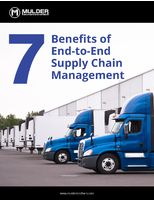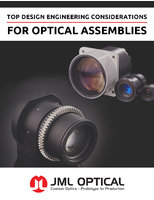Designed with Aerospace Technology and Algor FEA, Innovative Wheelchair Provides Greater Mobility and Independence
Share:
When Aero Innovative Research, Inc. (AIR) of Valley Center, Kansas, decided to apply its aerospace-industry experience to the design of a new, high-technology wheelchair, they chose ALGOR finite element analysis (FEA) software for stress analysis of its custom-manufactured components. Made from the same materials used in aircraft, AIR's product, the Flight Ultralight Wheelchair, underwent extensive FEA simulation to make it as lightweight and compact as possible while ensuring necessary performance and durability.
"It's the world's lightest and tightest-folding, fully adjustable, customizable wheelchair," said Matt Cochran, AIR production manager. The Flight wheelchair weighs just 18 pounds and measures only 9-1/2 inches from hand-rim to hand-rim when folded, which provides greater mobility, ease of use and independence to people with physical challenges. "The Flight was designed in about a year," said Cochran. "ALGOR stress analysis provided a great way to rapidly perfect the design of our product. We couldn't have done it without ALGOR FEA software."
Applying Aerospace Expertise to Wheelchair Design
AIR's president, Keith Entz, previously founded an aircraft parts manufacturing company in 1997. To combat an economic down-cycle in the aviation industry, Entz, along with partners David Kirkwood and Cochran, launched AIR in 2005, seeking to apply their aerospace expertise to the medical products industry. "We wanted to branch out to another market that wasn't so cyclical and where we could function as an OEM [original equipment manufacturer] instead of a contractor," said Cochran.
Kirkwood is the company's vice president and an aircraft engineer. He is a triple amputee, having survived an attack of bacterial meningitis. Hence, Kirkwood lends direct knowledge and experience as a wheelchair user.
Strongly motivated, AIR recognized the aging baby-boom generation's growing need for better medical products. "Wheelchairs had been made pretty much the same way for the past 70 years, like patio furniture with bent and welded tubing and fabric," said Cochran. "We saw wheelchairs as screaming for new technology." AIR applied the same technology to wheelchair design as they had learned in aircraft design including: a sandwich panel frame made of lightweight, damage-resistant materials; 100-percent CNC (computer numerical control) machining; and precision assembly techniques including gun-drilled hinges and no welding.
Improving the Design with FEA
Strength of material and weight were primary design factors for AIR. "Because our design did not require welding, we could use stronger materials," said Cochran. "That's where ALGOR FEA came into play. The software allowed us to identify and reduce stress points and optimize the strength and weight of every part. We could simulate extreme conditions and push parts to the limit. We asked, 'Where can we remove material?' and could then cut out everything that was unnecessary. Using this method, we could revise the design swiftly - yet accurately."
Cochran worked closely with Entz, who provided engineering guidance. "It was just the two of us in an airplane hanger working on a computer," said Cochran. The process began with Cochran creating a three-dimensional (3-D) model of a part using Alibre Design computer-aided design (CAD) software. Then, Cochran opened the model in ALGOR software for analysis.
"Actually, we first used ALGOR DesignCheck, which was included with Alibre Design," recalled Cochran. AIR contacted ALGOR and inquired about obtaining the full-featured commercial version. "After an interactive Web demo, we purchased the Professional Static/LM core package. With the materials we used, linear static stress was all we needed."
Cochran also attended a three-day, introductory classroom training seminar hosted by ALGOR in Cedarville, Ohio. Despite having no previous FEA experience, Cochran said, "I really didn't require any further training, which is a testament to how easy the software is to learn and use."
Cochran modeled and analyzed every component of the Flight Ultralight Wheelchair that AIR manufactured including the frame panels, caster fork, rear axle plate, folding footplate and a custom hinge screw. The goals of the analyses were to remove extraneous material and make the design as lightweight as possible while maintaining necessary strength and ensuring a factor of safety.
"The main benefit of using ALGOR FEA was speeding up the design process," said Cochran. "We were an entrepreneurial start-up company working under limited funding, and it was important to make great progress every day. ALGOR FEA allowed us to rapidly design and virtually test a part over and over until we got it where we wanted. This process provided weight savings and allowed us to develop a stronger, optimized product."
Analyzing the Chair's Caster Flange
One part of the Flight Ultralight Wheelchair that AIR analyzed with ALGOR FEA software was the mounting flange for the front casters of the wheel assembly. "In other wheelchair designs, wheels can flutter and turn sideways, like is commonly experienced with grocery store carts," said Cochran. "But, our design uses a Delrin® bushing, which acts as a damper and keeps the wheel from fluttering."
Cochran modeled the caster flange in Alibre Design and then opened the model in ALGOR and set up for linear static stress analysis. He defined a maximum load of 1,620 pounds to simulate the chair with a 250-pound occupant falling three feet onto one wheel. "It's a load that we wouldn't expect a competitor's tube chair to survive. We tested our caster flange at this load as a level of overdesigning, to ensure that it could take the abuse, and give us confidence in its durability."
The FEA results indicated a need to revise the initial design. "We found a high concentration of stress," said Cochran. "So, a fin was added to distribute the load better, resulting in a part that was stronger and also approximately 15 percent lighter than the original design."
Laboratory Testing for FDA Approval
After all of the FEA simulation was done, AIR submitted the Flight Ultralight Wheelchair for physical testing at a leading test facility in Pittsburgh, Pennsylvania. Wheelchairs are required to pass tests set forth by ANSI (American National Standards Institute) and RESNA (Rehabilitation Engineering and Assistive Technology Society of North America) standards for approval by the FDA (United States Food and Drug Administration).
The chair was tested with automatic equipment including double-drum testers, curb-drop testers and impact testing. These tests simulate the lifetime of abuse expected for a wheelchair. The most rigorous of these tests include 200,000 cycles of double-drum testing and 6,667 curb drops.
After more than four months of extensive testing, the Flight wheelchair passed all tests on its first try without a single fastener coming loose. Thus, the Flight earned FDA approval for safety and effectiveness, which meant that Medicare, Medicaid and private insurers could provide reimbursements to patients who purchase the chair.
AIR vice president Dave Kirkwood uses the chair that endured the life-cycle tests. "It still performs like new," said Cochran.
Future Plans for ALGOR FEA
Following the release of the Flight Ultralight Wheelchair, AIR has upgraded to ALGOR's Mechanical Event Simulation (MES) software, which provides nonlinear, multi-body dynamics with large-scale motion, large deformation and large strain with body-to-body contact, allowing engineers to see motion and its results, such as impact, buckling and permanent deformation. "We've used MES to study a caster fork and spring fork," said Cochran. "We are hard at work using ALGOR software to improve the wheelchair and develop third-party accessories that can be used with competitors' wheelchairs."
For more information about Aero Innovative Research, Inc. and the Flight Ultralight Wheelchair, visit airwheelchair.com.
Delrin is a registered trademark of E. I. du Pont de Nemours and Company or its affiliates.




